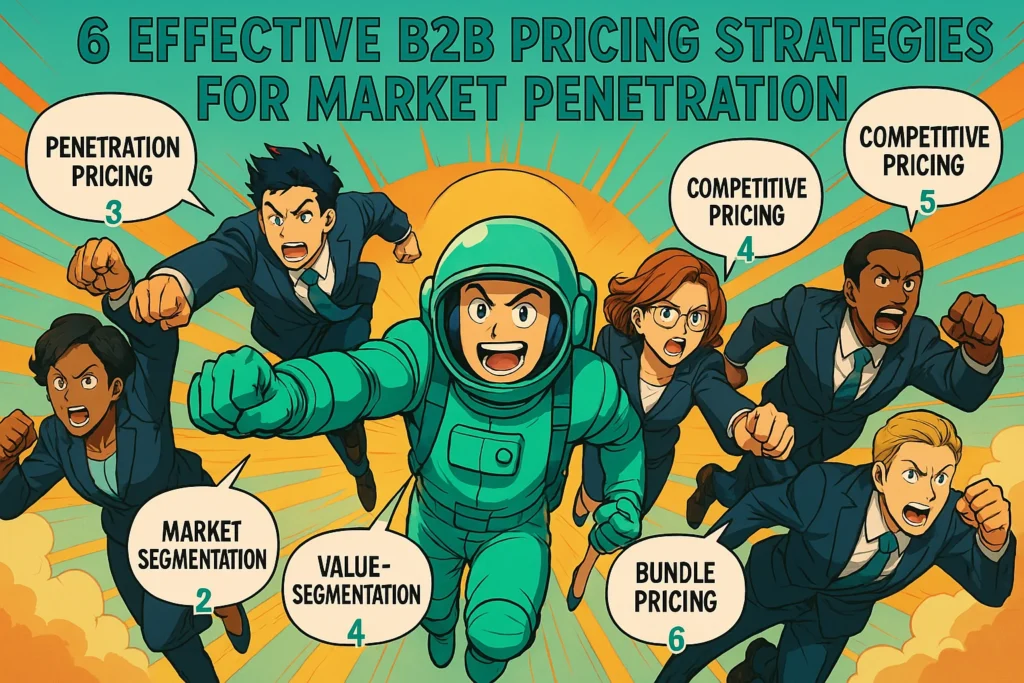Unlock B2B Market Dominance: Your Pricing Strategy Is Your Weapon
Let’s be direct: in the B2B landscape, pricing isn’t a line item; it’s a strategic declaration. You’re not just selling a product or service; you’re defining your value, controlling your sales cycles, and seizing your competitive positioning. Whether you’re attacking a new vertical or fortifying your enterprise foothold, your approach to B2B pricing strategies dictates your success. This isn’t theoretical. This is how you win market penetration.
Why Your B2B Pricing Strategy Is Non-Negotiable for Market Entry
Ignoring the power of strategic pricing is a rookie mistake. It’s not just about what you charge; it’s about what you signal. Here’s why it’s critical:
- Decision Catalyst: Pricing directly influences procurement decisions and budget approvals. Get it wrong, and deals stall.
- Brand Blueprint: Your price point establishes your identity. Are you the premium innovator or the disruptive challenger? Own that perception.
- Velocity & Lifetime Value: Smart pricing accelerates deal flow and builds enduring customer lifetime value (CLTV). Poor pricing chokes your growth.
- Relationship Lever: In B2B, pricing is often negotiated – it’s a living part of the relationship. Use it to build trust, not erode it.
The Arsenal: 6 High-Impact B2B Pricing Strategies
These aren’t suggestions; they are proven pathways to establish significant market penetration:
- Penetration Pricing (The Irresistible Hook): Offer reduced introductory rates or compelling pilot packages. This isn’t about being cheap; it’s about rapid market share acquisition. Get in, prove value, then scale.
- Tiered Pricing (Segmented Mastery): Tailor packages by client size (SMB, Mid-market, Enterprise) or feature sets. Cater to diverse business needs without diluting your core offering. This maximizes reach and revenue across segments.
- Value-Based Pricing (Prove Your Worth): Price your solution based on the measurable ROI you deliver. Quantify the efficiency improvements, cost savings, or revenue generation your clients will experience. This strategy elevates you from vendor to indispensable partner.
- Anchor Pricing + Custom Quotes (Strategic Illusion): Display a clear baseline price to set an expectation, but maintain flexibility for bespoke enterprise negotiations. This anchors value while allowing the agility needed for complex deals.
- Pilot or POC Pricing (De-Risking the Decision): Offer low-risk, short-term evaluations or Proof of Concept agreements. This minimizes client uncertainty, allowing them to validate ROI before committing to a full rollout. It’s about building confidence.
- Contractual Incentives & Bundles (Sticky Relationships): Offer compelling discounts for longer-term contracts or multi-service commitments. This isn’t just a discount; it’s an investment in strengthened customer relationships and superior retention rates.
Strategic Selection: Choosing Your Dominant Pricing Strategy
This isn’t a guessing game. It’s a calculated decision. Ask the hard questions:
| The Core Question | Why It Matters (Your Strategic Lens) |
|---|---|
| Who are the decision-makers and buyers? | This defines your approval chain and deal structure. Tailor your pitch to their motivations. |
| What’s your true cost to serve at scale? | Critical for sustainable tiered pricing and healthy margins. Don’t leave money on the table. |
| How fierce is the market competition? | This dictates if you can command a premium or if an aggressive challenger stance is required. Know your battleground. |
| What is your desired brand perception? | Are you the disruptive challenger, the trusted advisor, or the premium leader? Your price signals this immediately. |
| Can you definitively prove ROI early on? | Essential for successful POCs and value-based pricing. If you can’t, rework your value proposition. |
Execution Mandate: Pro Tips for Pricing Mastery
Strategy without execution is just theory. Here’s how you operationalize winning pricing:
- Empower Your Sales Team: Equip them with compelling sales enablement tools—ROI calculators, irrefutable case studies. They must justify your value with confidence.
- Engineer Stickiness: Strategically bundle services. This isn’t just about selling more; it’s about enhancing customer loyalty and making your solution indispensable.
- Incentivize Growth: Implement volume discounts tied to renewal or expansion incentives. Reward commitment, drive longer engagements, and secure future revenue.
- Allow Agility: Give your sales teams room to negotiate within defined parameters. Empower them to close deals effectively without giving away the farm.
- Iterate Relentlessly: Review your pricing quarterly. The market shifts. Your value evolves. Ensure your pricing remains competitive and perfectly aligned with your market position. For deep dives into benchmarks, check out OpenView Labs.
Your Strategic Arsenal: Recommended Tools for Pricing Excellence
You can’t win without the right tools. Leverage technology to refine and manage your pricing:
- ProfitWell: Provides churn and value-based analytics for data-driven decisions. Stop guessing, start knowing.
- DocSend: Crucial for securely sharing and tracking your pricing proposals. Know who’s looking, and for how long.
- Salesforce CPQ: Streamline your Configure, Price, Quote process. Eliminate errors, accelerate approvals, and make your sales team more efficient.
In B2B market penetration, your pricing isn’t just a number; it’s a bold statement of your brand’s value, your commitment to impact, and your competitive intent. Choose your strategy with precision, back it with data, and tell a compelling ROI story. This is how you don’t just enter a market; you dominate it.



